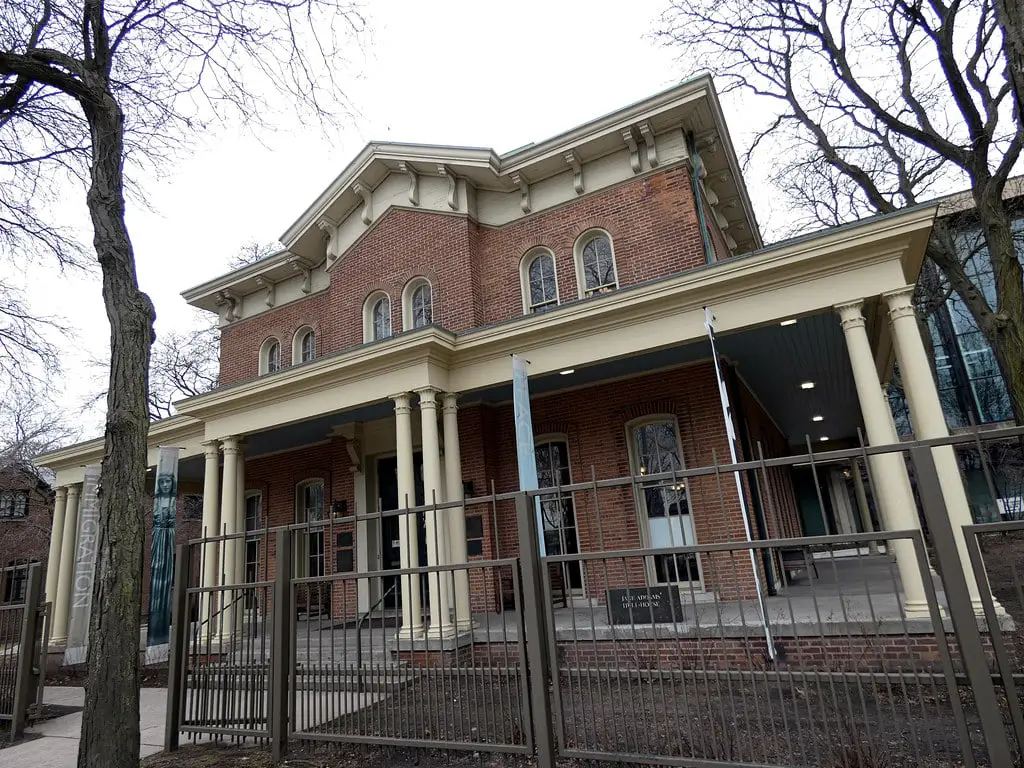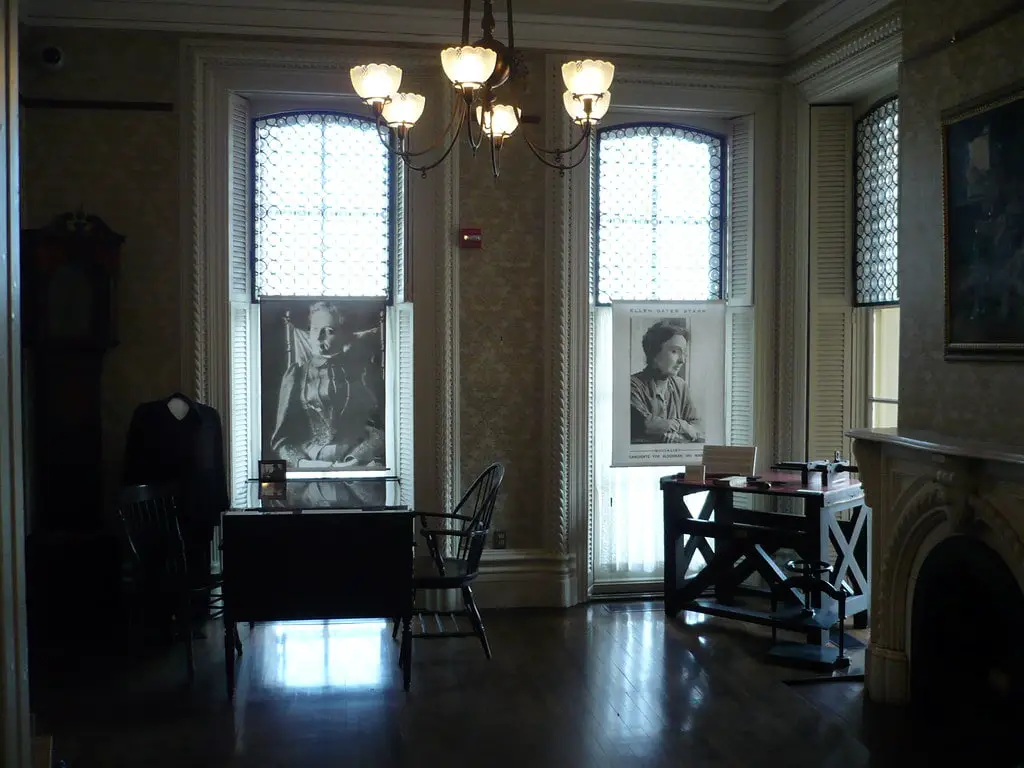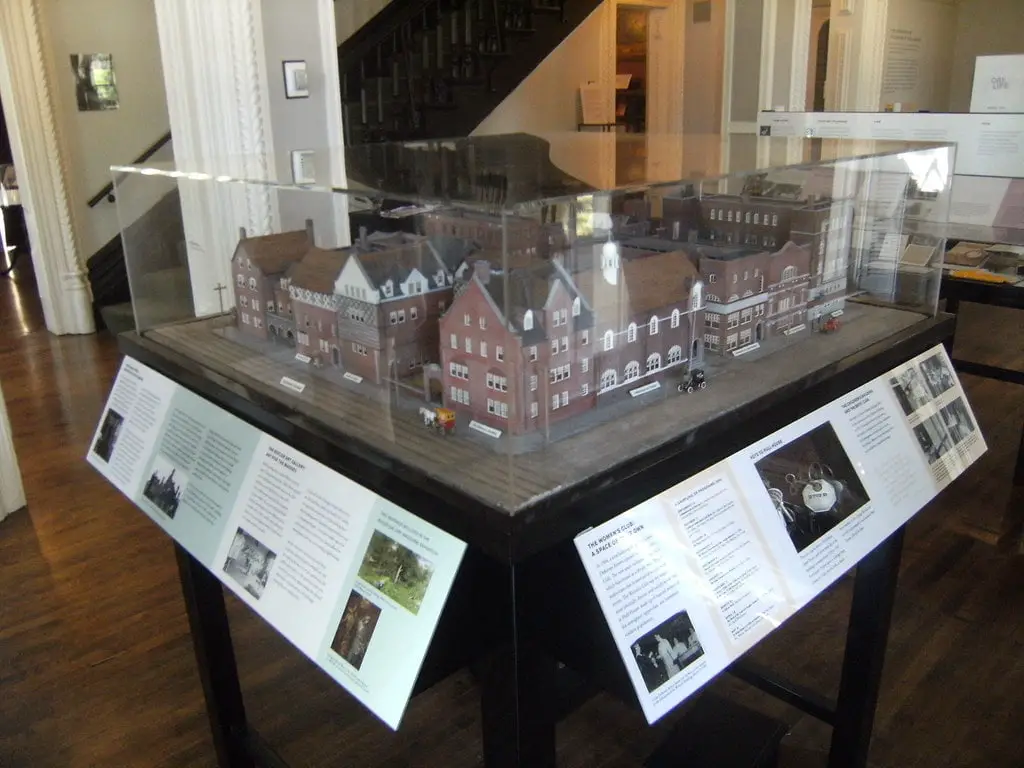Beginnings of the Jane Addams Hull House
A significant chapter of the city’s history unfolded in the heart of Chicago’s Near West Side.
At the end of the 19th century, a house named after its first owner, Charles Jerald Hull, opened its doors to the recently arrived European immigrants.
This was Hull House, a beacon of hope and a symbol of resilience. Founded by Jane Addams and Ellen Gates Starr on September 18, 1889, it soon grew into a settlement house that aimed to serve the local community with social, educational, and artistic programs.
Their inspiration came from Toynbee Hall in London, a center for social reform.
It was the concept of a “community of university men” that Addams and Starr sought to emulate, providing a space for recreational clubs and social gatherings among the working class and people experiencing poverty.
The Hull House’s mission was clear – to deliver opportunities for those most needed them.
A Movement for Women
Amidst the 19th-century women’s movement, organizations led by women began to form, promoting education and autonomy and breaking into traditionally male-dominated occupations.
Hull House, nestled within working-class neighborhoods, was one such establishment.
It was where women, bonded by sisterhood, worked tirelessly for social reform.
Hull House became “a community of university women,” providing social and educational opportunities for the working-class people surrounding it, many of whom were recent European immigrants.
These women, often single, were known as “residents.”
They held classes on literature, history, art, domestic activities, and other subjects, offering free concerts, lectures, and clubs for adults and children alike.
USA Quiz
How many questions would you like?

The Three R’s
Jane Addams had a vision for the settlement house movement, which she captured in what has been described as “the three R’s”: residence, research, and reform.
The vision encompassed a close-knit relationship with the local community, a scientific approach to understanding the roots of poverty and dependency, and relentless advocacy for social reform.
Hull House undertook meticulous research on the Near West Side, known as the “Hull House Neighborhood,” pushing against the established norms and collaborating with various institutions to create and execute programs to improve the prospects of the predominantly immigrant population.
Expansion and Decline
By 1911, the Hull House had grown to include 13 buildings. In 1912, the addition of a summer camp, the Bowen Country Club, marked the completion of the Hull House complex.
By 1920, it had become a beacon for about 500 settlement houses nationwide.

The Hull mansion and several other acquisitions were consistently upgraded to meet the organization’s evolving needs.
Unfortunately, most of the Hull House buildings were demolished in the mid-1960s for the construction of the University of Illinois Chicago.
The original building and one additional building survived, and in 1965, it was designated as a U.S. National Historic Landmark.
The Hull House Today
Even after relocating from the original complex in the 1960s, The Hull House Association remained committed to delivering social services at various locations across Chicago until it eventually shut down in January 2012.
Today, the Hull mansion and a corresponding dining hall, the last remnants of the Hull House complex, are preserved as a history museum.
This museum is a testament to the ideals and values that Jane Addams embodied and the commitment to social justice that the Hull House advanced daily.

A New Era
Today, the Jane Addams Hull-House Museum is ready to usher in an exciting new era under the leadership of Liesl Olson, a respected scholar, cultural leader, and social justice advocate who took the position of Director in March 2023.
Olson’s commitment to social justice and public engagement has been a fundamental component of her work.
She spearheaded several exhibitions and projects, including the “Newberry Chicago Avant-Garde: Five Women Ahead of Their Time” exhibition and catalog in the fall of 2021.
In her new capacity, Olson is set to collaborate intimately with the dean of the College of Architecture, Design, and the Arts to cater to internal UIC audiences and external stakeholders while bringing to life the mission and collections of the Jane Addams Hull-House Museum.

The Echoes of the Past: Haunting Activity at Hull-House
Hull House, the former settlement house and now a historical museum, has been the site of numerous reports of haunting activity over the years, adding a spectral layer to its rich and storied history.
The echoes of the past seem to reverberate through the now quiet halls, providing an eerie reminder of the lives once intertwined with the establishment.
The origin of the haunting stories dates back to the early days of the establishment.
As a place of refuge, education, and community for these immigrants, Hull House was often a space of high emotion and profound personal transformation.
Some believe these intense experiences have left a spiritual imprint on the building, leading to the reported hauntings.
The most famous ghost story associated with Hull House is that of the “Devil Baby.” Legend has it that a child born with pointed ears, scales, and a tail was brought to Hull House.
Jane Addams was said to have taken the child in, hiding it in the attic.
While historians have thoroughly debunked this story, it continues to circulate, fueling the reputation of Hull House as a haunted location.
Other reported paranormal activity includes the sighting of apparitions dressed in period clothing, inexplicable cold spots, and disembodied voices whispering in various languages, perhaps a nod to the multilingual immigrant community that once frequented Hull House.
Despite the chilling tales, it’s important to note that the reported hauntings have never overshadowed the immense historical and cultural importance of Hull House.
The spectral activity, if anything, serves as a symbolic reminder of the house’s past, echoing the trials, tribulations, and triumphs of those who sought refuge within its walls.
It’s fascinating to consider how the legacy of Hull House, as a beacon of social reform and a pillar of the community, continues to resonate in these haunting stories.
Just as it provided a sanctuary for the living, it appears to offer the same for the spirits of the past.
The paranormal activity, therefore, can be seen as a testament to the enduring impact of Hull House, a place where history continues to speak, even from beyond the grave.

